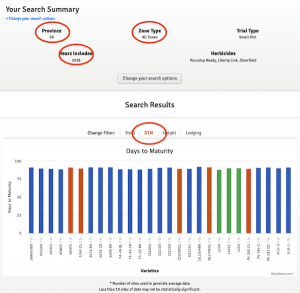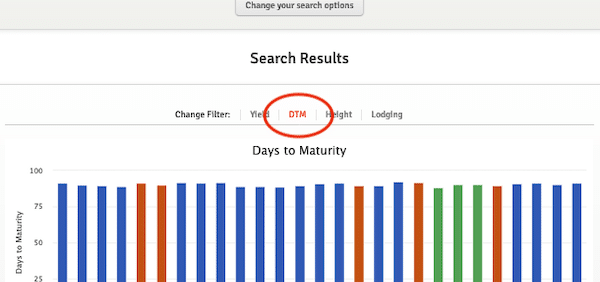Canola seeded in late May and early June will have lower yield potential than canola seeded in early May, and it may run into challenges with timely harvest while farmers wait for the crop to mature. Here are some considerations for late-seeded canola and some tips to help canola mature faster.
Look at the average date of first fall frost. This will tell you how much growing season you have left — on average. Click your province for a map showing average dates for first fall frost: Alberta Saskatchewan Manitoba. (Click here for frost probabilities for each station on Alberta’s AgroClimatic Information Service (ACIS) website.) Most fall frosts occur within two weeks either side of the average date for your area. For example, if the first fall frost is between August 31 and September 6, on average, then a variety with 100 days to maturity should be seeded this week to be on the lower risk side for fall frost damage.
Choose an earlier-maturing variety. Switching from a long-season B. napus (Argentine) to an early-season B. napus can gain a week. Switching to a B. rapa (Polish) variety can gain two weeks. If yield potential for Argentine canola is greatly reduced, growing a Polish variety may be more economical – but keep in mind that yield potential for Polish is lower and without herbicide tolerance, weed control can be more difficult. Pre-seed burnoff is highly recommended if growing a Polish cultivar. To find earlier-maturing Argentine varieties, use the Canola Performance Trials online tool. Search by days to maturity (DTM) as well as yield.
More on variety choice… A 2010-12 re-seeding study at Western Applied Research Corporation (WARC) in Scott, Saskatchewan may provide some insights on late seeding. Consider that result could be different in a short-season zone. The study found that:
- re-seeding to the same full-season variety in early June resulted in significantly higher yields at 50% of sites compared to the low plant population control (fewer than 4 plants per square foot) seeded in mid May.
- reseeding in early June to a slightly shorter season variety resulted in higher yields than the earlier-seeded low population control at only 25% of site years.
- reseeding to Polish canola did not pay when compared to reseeding to an Argentine variety.
- reseeding in mid June did not pay.
Seed shallow. This is always a good idea, but especially this time of year when soils are warm. Canola seeded at the shallow end of the recommended range – half an inch deep – can emerge three or four days earlier than canola seeded deeper.
Increase plant density targets. CCC recommends targeting 50-80 plants per square metre (five to eight plants/ft2). A more dense stand (seven to eight plants/ft2) will mean less branching and an overall earlier maturity. This can gain a day or two.
Use seed-placed phosphate fertilizer. Pop-up phosphate fertilizer applied with the seed can gain a day or two, but this effect will be diminished by warmer soil temperatures and higher soil P levels. Maintain safe rates of seed-placed fertilizer. Over-application may not always reduce plant stands, rather it may delay emergence.
Practice integrated pest management (IPM). While some diseases cause premature ripening, those symptoms rarely occur uniformly across the whole field. Pests like weeds, insects and diseases can result in non-uniform canopies which delay overall average maturity and harvest.
Reduce nitrogen rates (within recommended ranges). Lower nitrogen availability means the crop will not be vegetative for as long, which means the crop may mature a bit earlier.
Consider the profit potential of other crops. Yield potential for all crops drops with late seeding. Will a lower yielding canola crop provide a better return than a lower yielding wheat or barley crop? Take time to pencil out the economics. MASC compares seeding date and yield for various crops in Manitoba.


